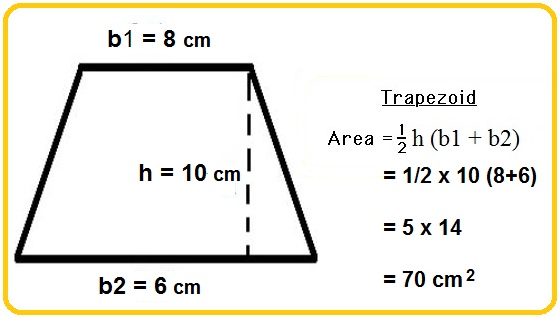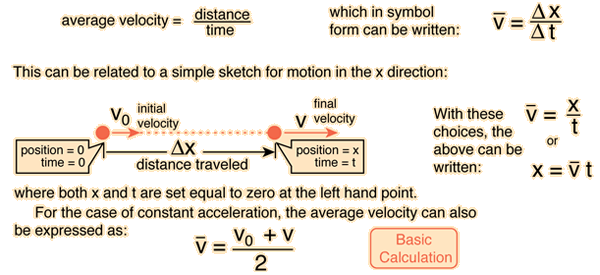Derivation of Average Velocity
Claimed by Gahan Wang (Fall 2016)
The Main Idea
The main idea is to provide proof of the universal equation for average velocity. It is also to validate the equation with fundamental concepts and variables both in science and in math.
A Mathematical Model
- [math]\displaystyle{ T }[/math] = Time
- [math]\displaystyle{ p }[/math] = Momentum
Geometric Derivation
- The equation for average velocity is [math]\displaystyle{ v_{avg} = {\frac{v_{ix} + v_{fx}}{2}} }[/math] when velocity in any direction is changing at a constant rate.
- When using geometry as proof, the area of a trapezoid can be used to support the derivation of average velocity. [math]\displaystyle{ A_{trap} = {\frac{top + bottom}{2}} * altitude = x_f - x_i = {\frac{v_{ix} + v_{fx}}{2}} * (T_f - T_i) }[/math]
- By dividing the change in time, we get the widely recognized formula for average velocity, [math]\displaystyle{ {\frac{\Delta x}{\Delta t}} = {\frac{v_{ix} + v_{fx}}{2}} }[/math]
Algebraic Derivation
- Change in momentum is [math]\displaystyle{ \Delta p = F_{net} * \Delta t }[/math] which is also equal to [math]\displaystyle{ F_{net} = {\frac{\Delta p}{\Delta t}} }[/math].
- When evaluating the change in momentum as time approaches zero, [math]\displaystyle{ F_{net} }[/math] becomes constant. When the change in time with respect to momentum is 0, [math]\displaystyle{ p = p_i }[/math].
- [math]\displaystyle{ v_x = {\frac{dx}{dt}} = {\frac{F_{net}}{m}}t + v_{ix} }[/math]
- [math]\displaystyle{ v_{avg} = {\frac{x - x_i}{t}} = {\frac{1}{2}}{\frac{F_{net}}{m}}t + v_{ix} = {\frac{1}{2}}(v_{fx} - v_{ix}) + v_{ix} }[/math]
- [math]\displaystyle{ v_{fx} = v_x = {\frac{F_{net}}{m}}t + v_{ix} }[/math]
- After simplifying, [math]\displaystyle{ V_{avg} = {\frac{v_{ix} + v_{fx}}{2}} }[/math] where [math]\displaystyle{ v_x }[/math] changes at a constant rate.
Examples
Geometric Model Example
- Area of the trapezoid = [math]\displaystyle{ x_{tot} }[/math]
- Altitude = <nath> \Delta t </math>
- Top side of trapezoid = [math]\displaystyle{ v_{xi} }[/math]
- Bottom side of trapezoid = [math]\displaystyle{ v_{xf} }[/math]
Algebraic Model Example
Connectedness
- Using basic, fundamental mathematical variables to prove physics equations shows the connection between math and science and how the same concept of limits and derivatives applies to an important, primary scientific principle in average velocity.
External links
- http://physics.tutorvista.com/motion/average-velocity.html
- http://www.mathopenref.com/trapezoidarea.html
- http://www.physicsclassroom.com/class/1DKin/Lesson-1/Speed-and-Velocity
- http://hyperphysics.phy-astr.gsu.edu/hbase/mot.html
References
- "Area of a Trapezoid. Definition and Formula - Math Open Reference." Area of a Trapezoid. Definition and Formula - Math Open Reference. Math Open Reference, n.d. Web. 05 Dec. 2015.
- "Average Velocity." Average Velocity. TutorVista, n.d. Web. 05 Dec. 2015.
- Description of Motion. N.p., n.d. Web. 5 Dec. 2015.
- "Speed and Velocity." Speed and Velocity. The Physics Classroom, n.d. Web. 05 Dec. 2015.

